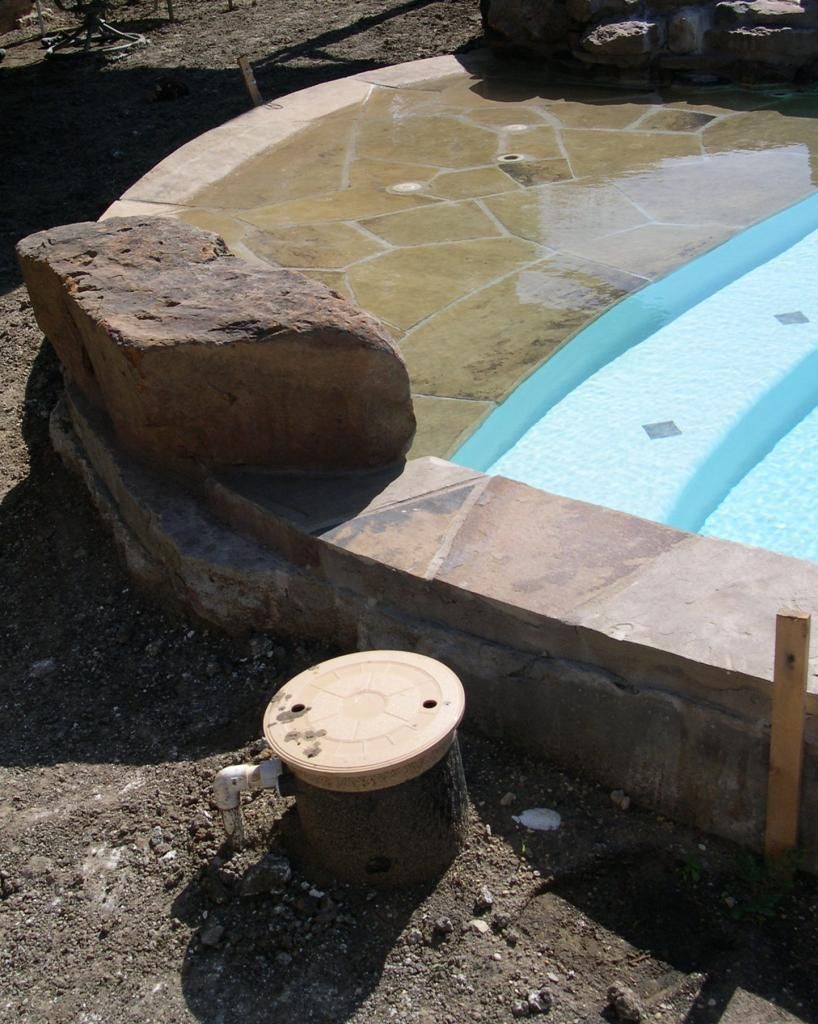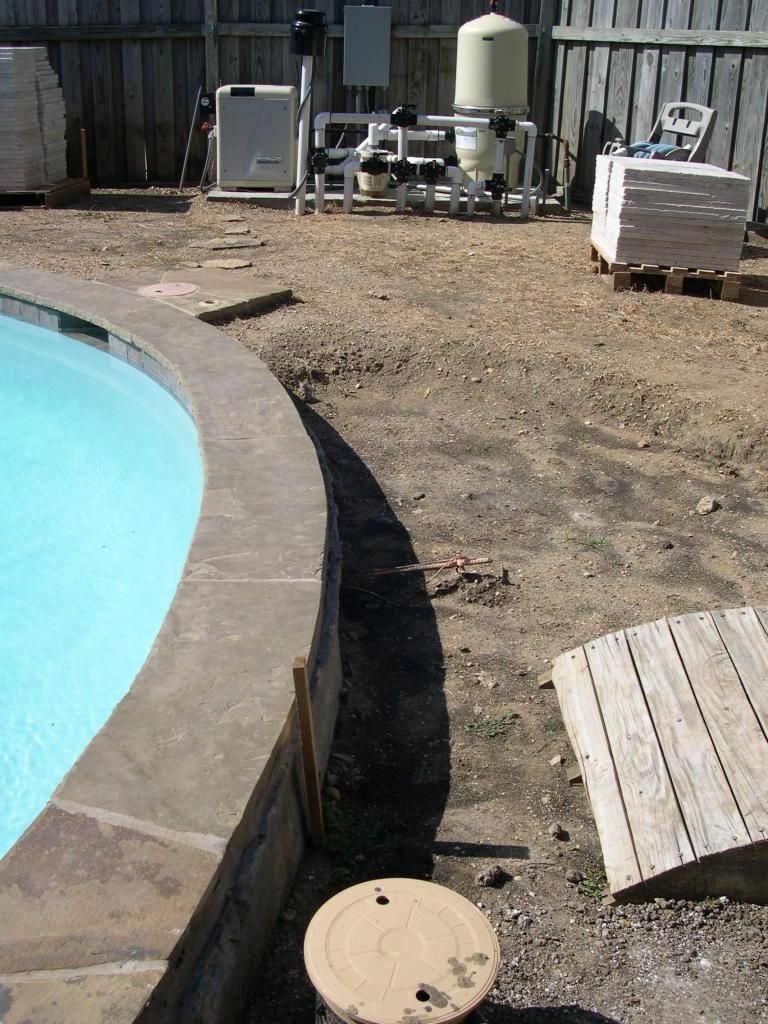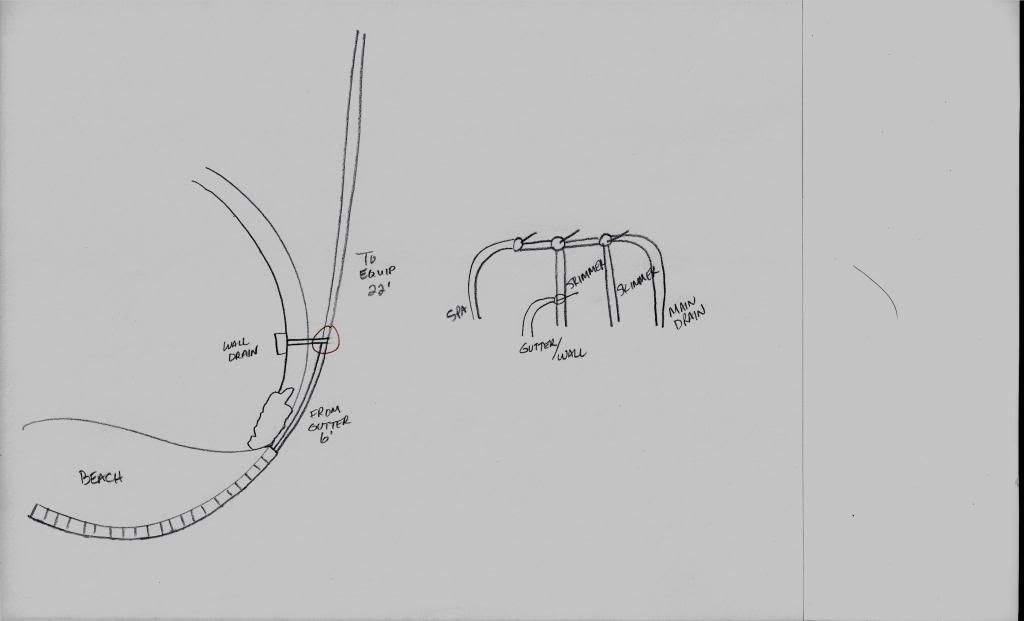I’d like to equip my beach entry with a gutter and balance tank setup. I have a concrete drain going in, and the plan was for it to drain to the street, but I’d rather recirculate the water, if possible.
From what I understand, there are two types of pools these service. Pools that feed the filter system this way- the water level is above the level of the gutter and continually overflowing (when the system is on), and pools that have the gutter system in place to handle displaced water- which is what I’m looking at.
In the second system, how do you set it up to handle the variable input? It would seem that if I get the suction correct for when the pool is not overflowing (i.e. it is balanced for the static line input/output), that it would not be enough suction to handle when the pool is overflowing. Am I missing something?
Here is a diagram of a balance tank that I think could suit my purpose, sans the main drain connection. For the static line I would repurpose the auto fill line, I’m not crazy about the auto fill anyway. I also don’t understand how the how the gravity flow from the gutter works coming in to the bottom of the tank? Is there a backflow device that yields to low pressure?

From what I understand, there are two types of pools these service. Pools that feed the filter system this way- the water level is above the level of the gutter and continually overflowing (when the system is on), and pools that have the gutter system in place to handle displaced water- which is what I’m looking at.
In the second system, how do you set it up to handle the variable input? It would seem that if I get the suction correct for when the pool is not overflowing (i.e. it is balanced for the static line input/output), that it would not be enough suction to handle when the pool is overflowing. Am I missing something?
Here is a diagram of a balance tank that I think could suit my purpose, sans the main drain connection. For the static line I would repurpose the auto fill line, I’m not crazy about the auto fill anyway. I also don’t understand how the how the gravity flow from the gutter works coming in to the bottom of the tank? Is there a backflow device that yields to low pressure?







